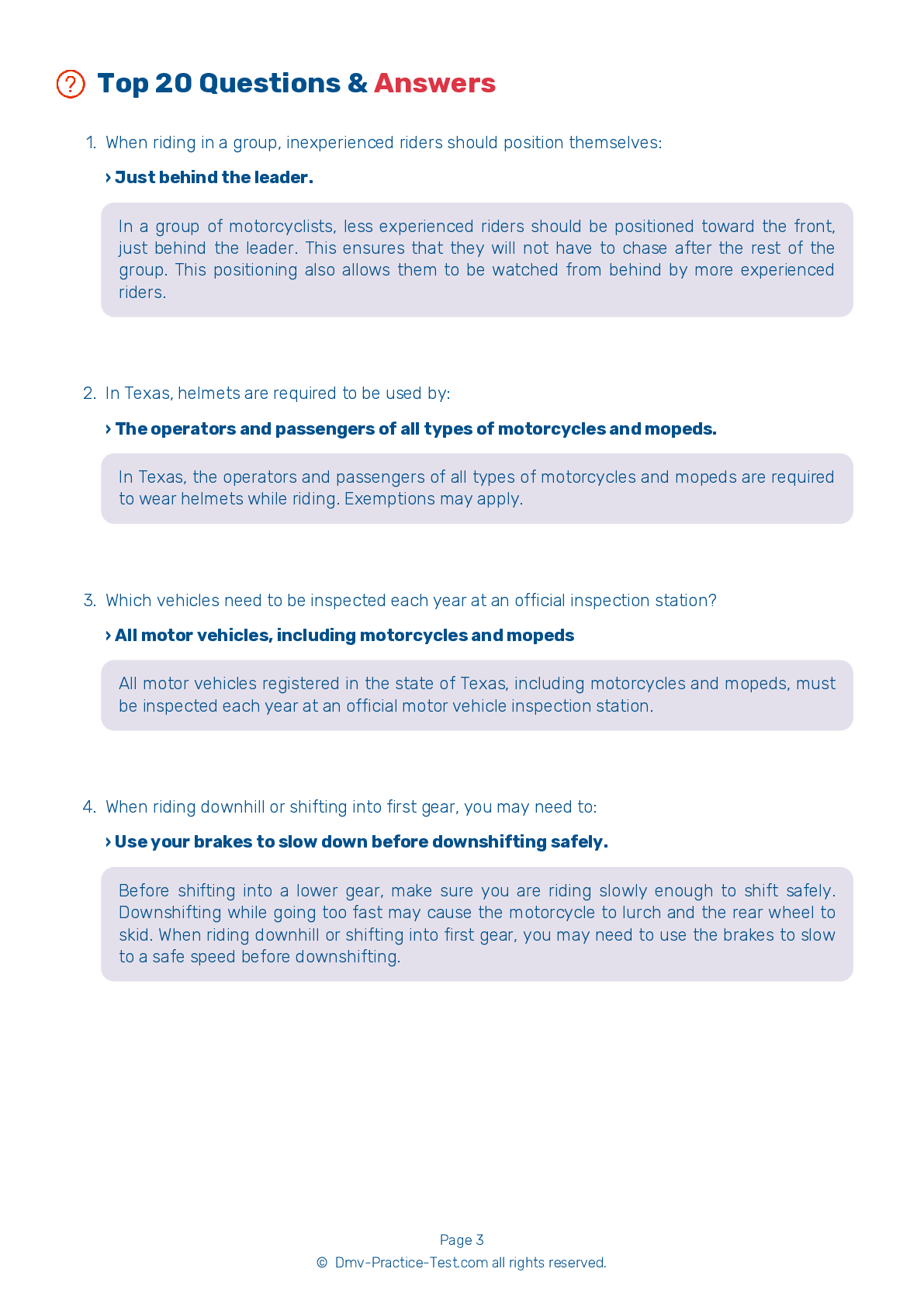Motorcycle Test | License TX 2024 | FREE Online Practice! #10 Page 3 of 4
Take this FREE motorcycle test (license in TX 2024) to check your knowledge of the road rules. To improve your results, download a motorcycle handbook online, study theory, and practice for free on our website. Still worried about how to get a motorcycle license in Texas in 2024? Check our website for more sample tests, train as much as possible, and boost your grades!
11 . If a tire goes flat and you must brake, you should:
If either of your tires go flat and you must brake, gradually apply the brake of the tire that is not flat (if you are certain of which tire that is).
12 . When riding with a heavy load, you will want to adjust the:
Before riding with a heavy load, you should make sure your tire pressure, spring pre-load, air shocks, and dampers are at the settings recommended for the relevant weight.
13 . If you will be carrying a passenger on your motorcycle, you will likely have to:
Because a passenger will place additional weight on your motorcycle, you will probably need to add a few pounds of pressure to your tires before riding. Check your owner's manual for details regarding the appropriate pressure settings to use.
14 . When entering a turn, a rider should:
Before entering a turn, a motorcyclist should reduce their speed by closing the throttle and, if necessary, applying both brakes.
15 . If your drive chain slips while you are riding, you should:
A drive chain that slips or breaks while you are riding could lock the rear wheel and cause your motorcycle to skid. If the chain slips while you are riding, pull off the road and check the chain and sprockets. Tightening the chain may help. If the problem is a worn or stretched chain, or worn or bent sprockets, replace the chain, the sprockets, or both before riding again.
See the exact questions that will be on the 2024 Texas DMV exam.
99.2% of people who use the cheat sheet pass the FIRST TIME
Jeneen was tired of paying $5/gallon. She got herself a scooter that required the motorcycle license. She studyed the motorcycle test cheat sheet and passed her test the next day!
Christopher tells us how he knew nothing prior to obtaining the motorcycle study guide, and he only got one question wrong because he clicked on the wrong answer by mistake.



